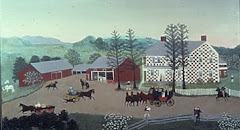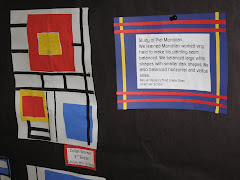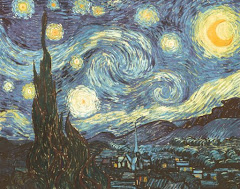Smithson's spiral jetty in Utah is fulfilling the "fourth traditional role of the artist".
This fourth role of the artist is "meant to help us see the world in a knew or innovative way." This role is "designed to transform our experience of the world, jar us out of our complacency and create new ways for us to think about the world around us."(page 8, text)
Bierstadt's(Rocky mountains) Chen's (The Central Mountain) and Smithson's Spiral Jetty have commonality in that they are all working within the boundaries of nature and at the same time using their "tools" in a way that changes the way we might view a particular site through their art mediums in a new way. While they are each using the voice of nature, they are culturally speaking their own experience and reality through their works. For example, Bierstadt paints in oil on canvas a landscape which might exist in America. He had actually painted the Alps as he was a trained painter in Europe. He saw American landscapes culturally through European eyes perhaps as the text says : "even secretly longing for America to be Europe." (page 5, text) He works as an artist that wants "to record the world but only as he sees it "and he wants us to share that with him. (page 5)
Chen works in the second traditional role of the artist: "to give visible or tangible form to ideas, philosophies, or feelings." (page 6,text) In this way Chen and Bierstadt differ in their message but not their mode. Chen reveres nature while Bierstadt is ready to recreate what nature has wrought to recreate his own experience. The spiral jetty holds commonality with the Chinese culture's yin and yang and the Egyptian culture's spiral designating the"motion of cosmic forms and the relationship between unity and multiplicity." (page 9, text)
As each thread in a tapestry is woven to depict the artist's message or view I feel that each artist's work are all as intertwined with each other yet distinct from one another.They are intertwined culturally, historically and individually. Different in their world view culturally, yet similar in that they want to tell the world what they see, feel or believe through natural landscapes.
In dramas or written works or music there usually is a "back story". Had I not read each artist's "back story" their work may not have had much more meaning to appreciate. For instance, knowing the common threads between the Egyptians and the Chinese symbolisms and the "living" work that the Jetty is gives me more "meat" to chew on---something deeper than an appreciation for the scope, scale and living art.
M. Martino
Subscribe to:
Post Comments (Atom)























No comments:
Post a Comment